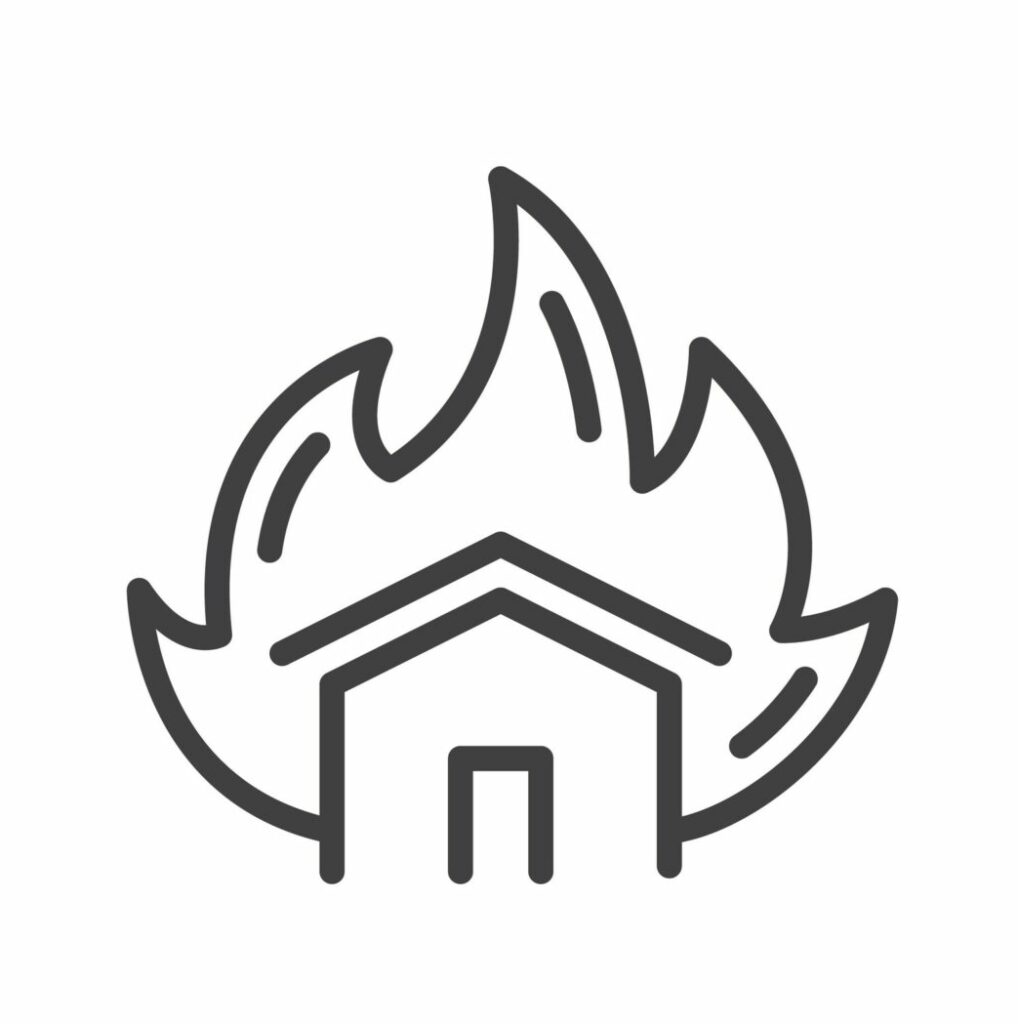Home Renovations That Protect Your Home From Wildfires
Wildfires represent the raw, immense, sometimes terrifying power of Mother Nature.
Like with most natural disasters, there’s not a lot we can do–besides, flee–in the face of a raging wildfire. Unfortunately, when we flee, it’s difficult to take our home out of the way of the fire with us. A few simple choices on our end, however, including what siding and roofing materials we use in our home, can make a difference and potentially save our home.
Roofs and the materials under them are split into four categories of flammability: class A, class B, class C, and unrated. In order for a roof to be class A, it must meet several requirements, including limiting flame spread to 6 feet and lasting 2-4 hours of exposure to flame before ignition. Class B roofing can have a flame spread of 8 feet and must last at least 1 hour before ignition. Class C roofing can have a flame spread of 13 feet and must last 20 minutes before ignition. Unrated roofing has no requirements, so beware.
The most wildfire-prone areas in the country, especially those in California, require homeowners to install Class A fire-resistant roofing.
The most common options of Class A roofing:
(What roof materials are best for resisting a fire? (when installed correctly))
https://www.homeadvisor.com/cost/roofing/#types (I stole this chart from this website)
Roofing Materials Price List
- Asphalt with a fiberglass underlayer: Asphalt is the least expensive option. It can withstand 2 hours of fire. It’s not the most fireproof but it’s usually okay unless you’re in an area that experiences frequent wildfires. Asphalt is also durable; it can last several decades without needing maintenance. It’s also the most popular in the US; up to 80% of the population has asphalt fiberglass roofs.
- Concrete/Clay are both more expensive to install than asphalt, but more resistant to fire. These materials in roofs can last up to 30 years.
- Slate is heavier duty, thicker, and its shingles don’t chip easily so embers can’t get inside your home. It lasts between 70 and 100 years, but is much more expensive than asphalt.
- Metal is non-corrosive and isn’t affected by rain, mildew, algae. It is very fire-resistant. If you have a steeper roof, it’s a better option. It’s also reasonably priced.
- Pressure-treated wood, as can be imagined, is not as effective against fires as the other materials. It requires regular sealing to maintain resistance against fire.
The exterior of the home tends to be less important than the roof when installing fire-resistant materials, as embers typically fall on top of the house rather than being blown into the side, but the siding and any other part of the exterior of your home is still important.
Fire-resistant siding options:
- Fiber cement can withstand very high temperatures.
- Metal sheeting is essentially fireproof.
- Brick, like the clay roofing, is also reasonably fire-resistant.
- Stone is essentially fireproof. Both brick and stone protect the inside of your home very well from fire, as they don’t have the same vulnerable, caulked joints as other siding materials.
- Stucco can withstand one hour of flame, which is reasonable, but not the best.
Materials not to use:
- Wood: Wood should generally be avoided if you’re worried about wildfires, although flame-retardants can be added to wood siding to make it more fire-resistant.
- Vinyl: Vinyl is also very flammable.
While there are several things you can do to make your home much more resistant to flame, the sad news is that if it’s in the way of a wildfire, the fire-resistant or even “fireproof” materials will likely only slow the flame’s consumption of your home (as evidenced by the Thomas Fire). According to the Mendocino County Fire Safe Council, 90% of homes that catch on fire burn to the ground. So, in addition to improvements you can make to your home (which, along with our wonderful firefighters, likely make up the 10% that will save your home from burning to the ground), what should you do to guide the fires away from your roof?
Codes and regulations pertaining to stopping the fire from even reaching your home
California and the National Roofing Contractors Association have several codes and regulations pertaining to stopping the fire from even reaching your home. They suggest:
- Putting (at least) 5 feet between your home and anything flammable, including vegetation and tree branches. Ensure that any leaves or other flammable flying objects (FFOs) are kept far from your home as well.
- Cleaning your roof regularly of anything flammable.
- Replacing damaged shingles to protect the inside of your home from falling embers.
- Using roof/vent covers that are non-flammable.
Aside from building your home out of stone and installing a moat around it, these materials and tips are the best tools we have for protecting you from wildfires.
References
https://www.npr.org/2018/12/09/673890767/fire-resistant-is-not-fire-proof-california-homeowners-discover
https://www.networx.com/article/comparing-roofs-fire-resistance
https://allclimateroofing.com/best-fireproof-roof-materials-protect-home/
https://www.builddirect.com/learning-center/building-materials/roofing/roof-fire-ratings-guide/
https://modernize.com/home-ideas/33677/siding-most-fire-resistant



